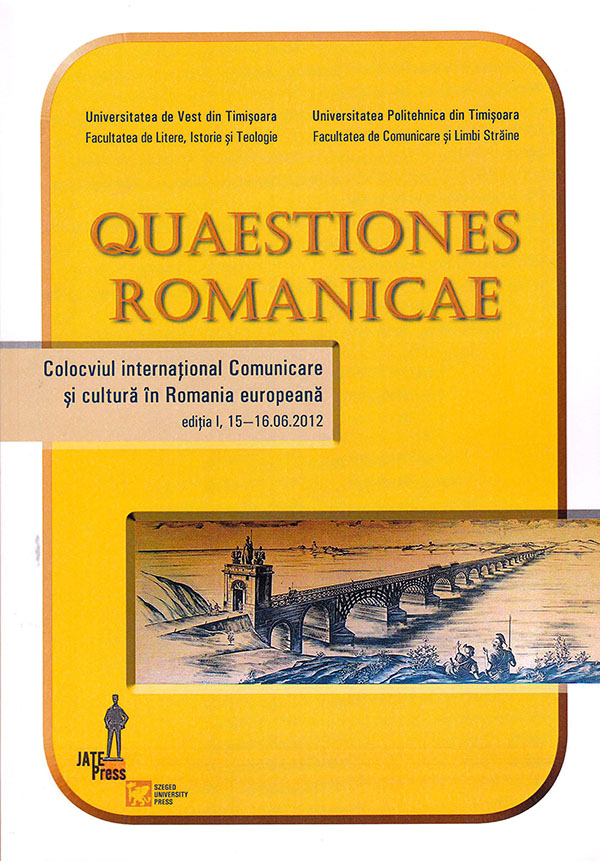The Description of New Hungary Representing Kingdoms, Provinces, the Banat County and Other Counties under Hungarian Sovereignty – a Revaluation Through Translation of a Major Written Tradition of European Culture
Abstract: An important documentary source emerged in the eighteenth-century, the Latin work of the Jesuit priest, Samuel Timon, Imago Novae Hungariae representans regna, provincias, Banatus Et Comitatus Ditionis Hungaricae is still very little explored. As testified by the author himself, in his work, “he intents to present the most important facts from Hungarian provinces”. Among these provinces, a privileged place is reserved to Banat, important not only from a historical but also from a scholar perspective. By definition, the historical work is a custodian of valuable knowledge of the past, and its value as a cultural product relies on conveying it to future generations. The current paper presents the main arguments for the first Romanian translation of Samuel Timon’s work regarded not only as a simple documentary source, but also as a receptacle and a disseminator of a cultural outcome.
Keywords: historiography, translation, recovery, source, narrative.
Rezumat: Importantǎ sursǎ documentarǎ, apǎrutǎ în secolul al XVIII-lea, opera în limba latinǎ a preotului iezuit Samuel Timon (1675-1736), Imago Novae Hungariae representans regna, provincias, Banatus, et Comitatus Ditionis Hungaricae constituie un material încǎ foarte puţin explorat. Dupǎ cum mǎrturiseşte însuşi autorul, în lucrare “urmǎreşte prezentarea celor mai importante probleme din provinciile ungare,” între care situaţia Banatului ocupǎ un “spaţiu” privilegiat, nu doar pentru istoric, ci pentru oricare cercetǎtor. Prin definiţie, un recipient al cunoştinţelor valoroase ale trecutului, opera istoricǎ este ea însǎşi un produs cultural întemeiat pe “transmitere”. Aceastǎ lucrare ia în considerare justificarea primei traduceri în limba românǎ a scrierii lui Samuel Timon, consideratǎ nu doar o simplǎ sursǎ documentarǎ, ci un receptacul care pǎstreazǎ un produs cultural şi totdatǎ un factor care selecteazǎ şi chiar transformǎ materialul pe care îl poartǎ.
Cuvinte-cheie: istoriografie, traducere, recuperare, sursă, narativ.
